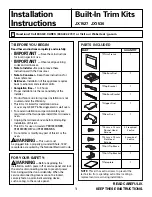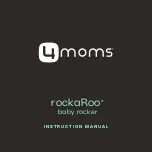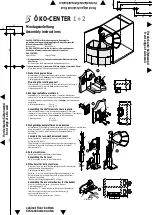
24
User's Guide ADI-192 DD © RME
In many input formats, the input signal's effective sample rate stays unclear because of possible
sample multiplexing. Therefore the frequency range has to be defined manually via the RANGE
button:
No LED (Single Speed):
The effective sample frequency is in the range of 32 kHz up to 48
kHz.
DS (Double Speed):
The effective sample frequency is in the range of 64 kHz up to 96 kHz.
QS (Quad Speed):
The effective sample frequency is in the range of 176.4 kHz up to 192 kHz.
DS + QS (Multi-range Mode)
The effective sample frequency is in the range of 32 kHz up to 192 kHz. Note: keep the RANGE
button pressed to activate this mode. Only Single Wire input signals are supported. Can only be
activated when AES is selected.
The function RANGE tells the SRC, which frequency its input signal has. The frequency of
its output signal (the frequency the input signal shall be converted to) is defined in the
CLOCK SECTION.
AES
An input signal in the range of 32 kHz up to 48 kHz can be a Single Wire transmission, but can
also be a multiplex transmission in Double or Quad Wire technology.
In case of Single Wire, the effective sample rate and the AES clock rate are identical, therefore
RANGE must be set to the same state as the one shown in the INPUT MONITOR section. With
Single Speed, no LED is lit, with Double Speed both DS LEDs must be lit, and with QS, both QS
LEDS must be lit.
There are two cases in which the device will intelligently limit your choices. At an input signal of
192 kHz, the QS LED will light up automatically, and can't be deselected. At 96 kHz, only DS
and QS can be selected, since the audio signal can't be 48 kHz. At 48 kHz however, the device
can not determine whether the signal is 48 kHz, 96 kHz Double Wire, or 192 kHz Quad Wire.
Therefore, the RANGE button must be used to set the sample rate range manually.
In the case of Double Wire, in spite of the AES clock being in Single Speed, the effective sam-
ple rate is Double Speed, i.e. 88.2 kHz or 96 kHz. The SRC will know when being manually
configured to RANGE DS.
In the case of Quad Wire, in spite of the AES clock being in Single Speed, the effective sample
rate is Quad Speed, i.e. 176.4 kHz or 192 kHz. The SRC will know when being manually con-
figured to RANGE QS.
When the SRC RANGE is kept pressed, both LEDs DS and QS will light up. In INPUT
MONITOR the LEDs DS and QS of the AES inputs will light up as well. With this the SRC sig-
nals that now any input signal is accepted. Single, Double and Quad Speed can be attached to
the four AES inputs in any combination, and converted to any desired output frequency. In this
Multi-range
mode (see above) neither Double nor Quad Wire are supported as input signal.
ADAT
ADAT is restricted to a frequency range from 32 kHz up to 48 kHz. Unfortunately the signalling
of doubled sample rate by sample multiplexing (S/MUX) is insufficiently standardised, and is
even set falsely from several devices. Therefore such signalling is displayed by the LED DW in
the INPUT MONITOR section, but does not cause any configuration change.
An ADAT input signal of 48 kHz could effectively be 48 kHz (no RANGE LED), 96 kHz S/MUX
(LED RANGE DS) or 192 kHz S/MUX4 (RANGE LED QS). Therefore, the range has to be con-
figured manually.
Summary of Contents for ADI-192 DD
Page 4: ...4 User s Guide ADI 192 DD RME...
Page 5: ...User s Guide ADI 192 DD RME 5 User s Guide ADI 192 DD General...
Page 12: ...12 User s Guide ADI 192 DD RME...
Page 13: ...User s Guide ADI 192 DD RME 13 User s Guide ADI 192 DD Usage and Operation...
Page 29: ...User s Guide ADI 192 DD RME 29 User s Guide ADI 192 DD Technical Reference...
Page 40: ...40 User s Guide ADI 192 DD RME 12 Block Diagram...
















































